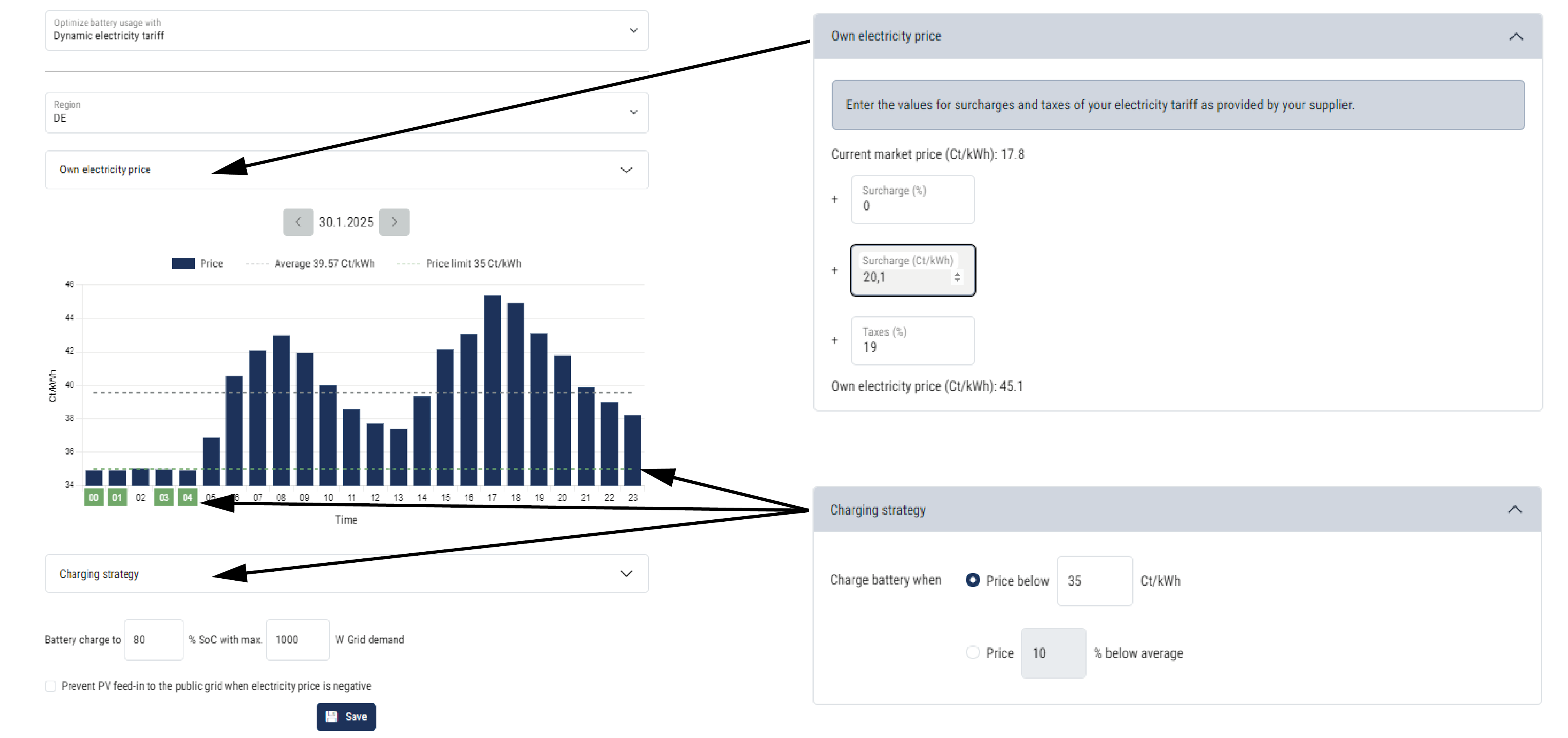Battery usage
If a battery is connected to the inverter, usage of the battery can be configured here.
The following options can be used to optimise battery usage:
|
Parameter |
Explanation |
|---|---|
No optimisation | The battery is used as normal for charging and discharging. All other settings should be configured under the battery settings. |
Time-controlled battery usage | There are times when the costs of electricity procurement are relatively high (different tariff models). Therefore, it may make sense to allow the battery to discharge during these periods and to allow charging outside of these periods. The times set here can be overridden by the specifications of an activated external battery management system. No limitation:
Battery charging blocked, battery discharge permitted in the event of demand from house: Battery discharge blocked, battery charging permitted in the event of excess power:
Battery charging to xxx% SoC with max. xxx W grid demand, battery discharge in the event of demand from house: Battery charging to xxx% SoC with max. xxx W grid demand, no battery discharge in the event of demand from house: |
Dyn. electricity tariff | If a dynamic electricity tariff is being used, the behaviour for battery charging from the grid can be configured here.
Region: Own electricity price: Graphic illustration of dynamic electricity price: Charging strategy: Battery charging to: Prevent PV feed-in to the grid with a negative electricity price: |
